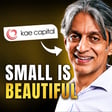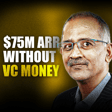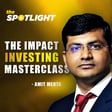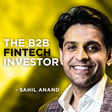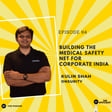
Unravelling the Threads | Ankit Jaipuria @ ZYOD
Dive into the world of fashion manufacturing with Ankit Jaipuria, Co-founder of ZYOD! Discover how ZYOD is disrupting the B2B fashion industry with a cutting-edge supply chain, learn about the rise of fast fashion, and explore opportunities in India's growing market. Whether you're a fashion enthusiast, a business owner, or an aspiring entrepreneur, this episode is packed with valuable insights into the future of fashion .
Akshay Datt, a serial entrepreneur having run ventures in Employability Training and hiring, is the host of "The Spotlight", presented by the Founder Thesis podcast. He has interviewed 500+ founders to date.
Connect:
Ankit Jaipuria: https://www.linkedin.com/in/ankit-jaipuria/
Akshay Datt: https://www.linkedin.com/in/akshay-datt/
Founder Thesis: www.founderthesis.com


